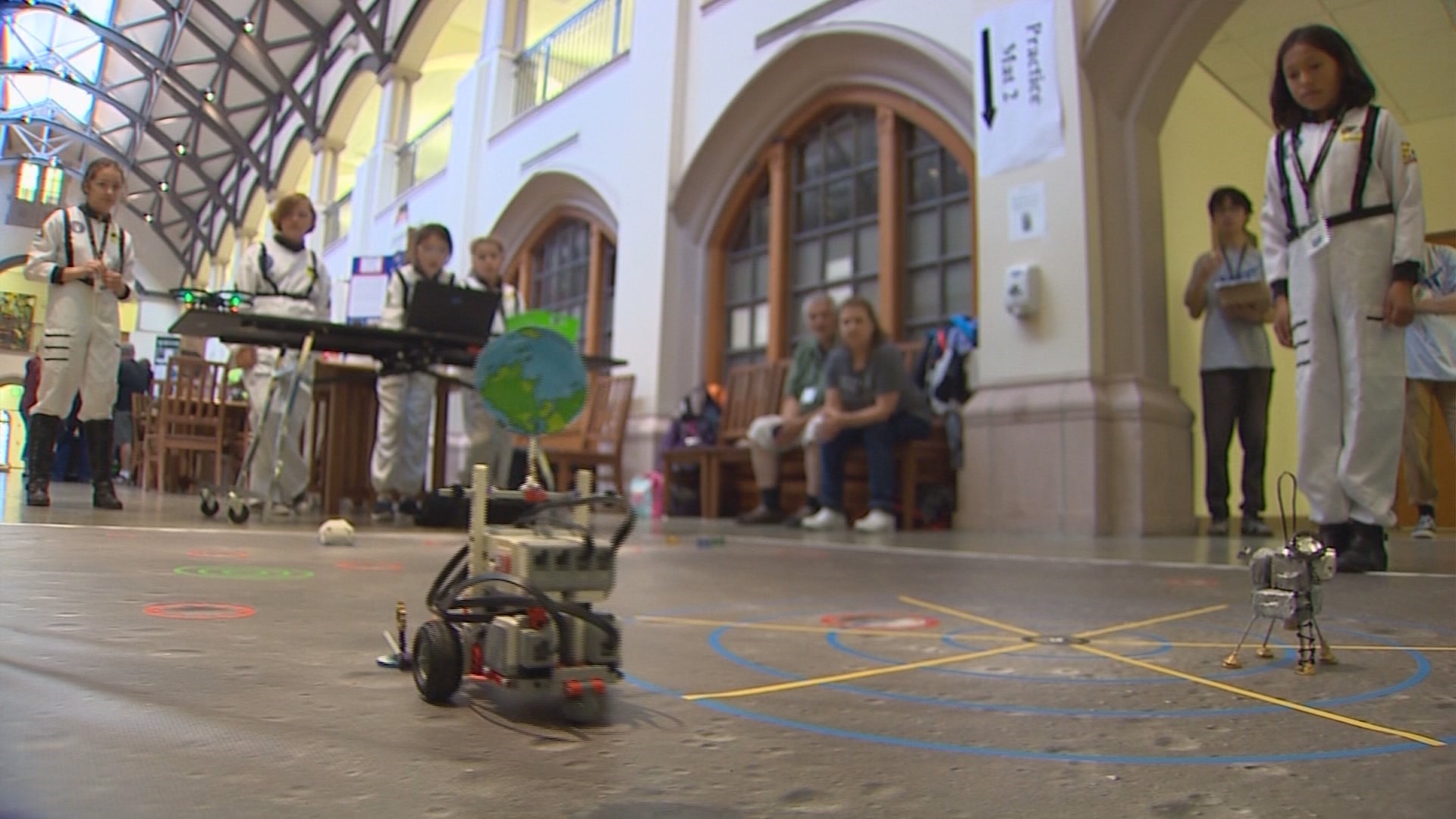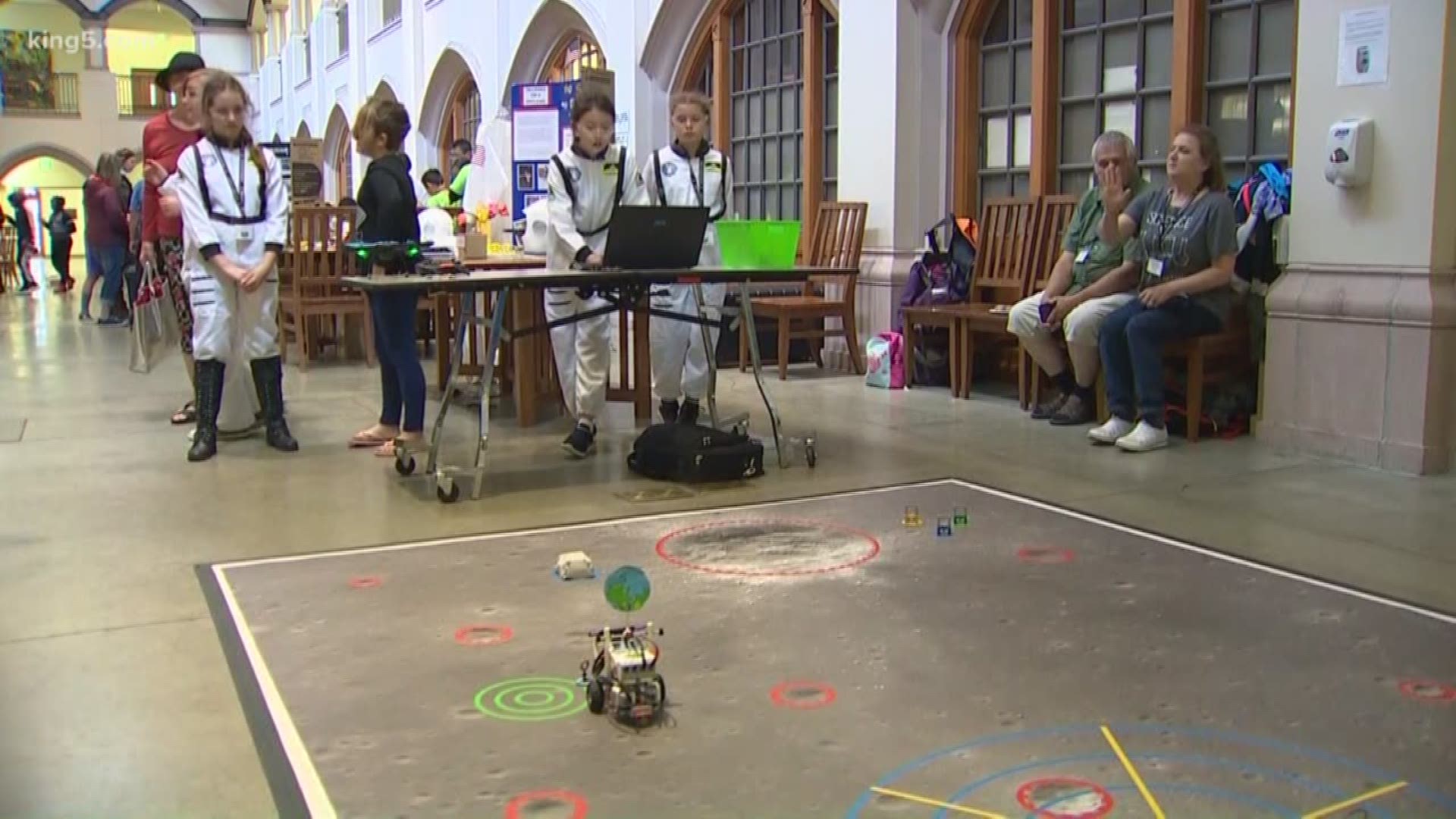Twenty-eight teams of 5-12th graders from across Washington state converged on the University of Washington Friday to show off their piloting, robotics, coding, and rock identification skills during the Apollo Next Giant Leap Student Challenge.
Each team was made up of 5 crew members: A Commander, a Lunar Module Pilot to fly a drone that drops the moon lander, a Science Officer who identifies lunar rocks, an Extravehicular Activity Officer who codes and directs a rover, and a CAPCOM who gives landing instructions to the pilot.
“I wanted to immerse the students in the feeling of Apollo,” explained Robert Winglee, director of the Northwest Earth and Space Sciences Pipeline which organized the event. “We wanted to reach underserved populations. We have people from all over the state, like Port Angeles, Yakima, and the Lummi nation.”
Students had to build a landing module and LEGO rover, pilot a drone, code the instructions for the rover to move a payload, identify a color-coded sample, and return the sample to the landing base. They also designed team uniforms and mission patches.
One team of 5th graders from Forks, Washington chose the name W.O.W. – Women of the World. The team stood out for being among the youngest competitors and going all-out on their uniforms, which included personalized “snoopy caps” inspired by a video they had watched of Buzz Aldrin.
Cole Peregrine, a parent of the W.O.W. team’s Commander TeaRenee, praised the science teacher who organized the team.
“Mrs. Schostak has been so dedicated to this. It’s a great opportunity for students from a rural town to come to the city and compete,” Peregrine said.
LaRayne Blair, the team’s CAPCOM, was enthusiastic about the event.
“We’re engineers and we’re awesome,” Blair said.
In addition to the competition, the event included a STEM career panel, tours of labs on campus, and a talk from NASA astronaut Dottie Metcalf-Lindenburger who was a high school science teacher in Vancouver, Washington before being selected for astronaut training in 2004. She was also the first Space Camp attendee to become an astronaut and helped set the record for most women in space during her 2010 mission to the International Space Station on the STS-131 Discovery.


